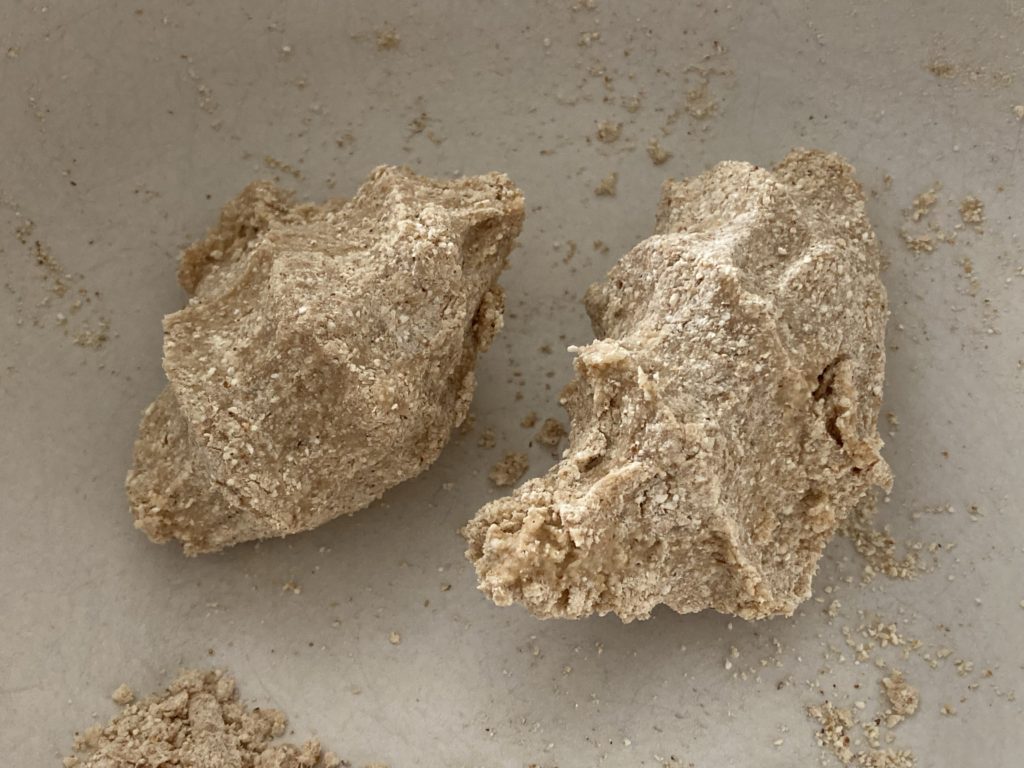Tsampa(རྩམ་པ)[糌粑] is roasted barley flour, a staple of Tibetan cuisine and an icon of Tibetan cultural identity.
For hundreds or even thousands of years, tsampa has been made and eaten by Tibetan people. It is nutritious and easy to carry and prepare. Many Tibetans eat it every day. Tsampa is a typical Tibetan breakfast food along with salted butter tea and various yak products.
In Tibet, Tsampa is commonly made with highland barley called nas(ནས)[青稞]. This type of barley can easily be hulled, leaving whole grains of barley. To make tsampa, hulled barley is traditionally roasted in hot sand, then strained and ground into coarse or fine powder. It can also be dry roasted or baked with similar result, though cooking with sand helps the barley cook quickly and evenly.
To eat tsampa, it is usually mixed with just enough salted butter tea or other liquid and pressed by hand into balls of dough called pa. This method is simple but may take practice to get just the right mixture. Sometimes Tibetans will first drink tea, leaving a small amount, then add tsampa to the tea left in their dish.
Another way to eat tsampa is to make porridge, or tsamthuk. Sometimes meat or vegetables are added.
There is an old tradition in Tibet of throwing tsampa in the air for celebration and for various rituals. Tsampa is often carried in a pouch, convenient for nomadic lifestyle.
In some areas, tsampa is served with different accompaniments or condiments. Tsampa or related dishes can also be found in Mongolia and other areas surrounding Tibet.

Tsampa(རྩམ་པ) Recipe
Ingredients
- hulled highland barley(ནས nas) or common barley
Directions
- heat sand
- add barley
- cook, stirring, until fragrant and evenly browned
- strain
- grind barley
- use or store
Pa Recipe
Ingredients
- 2 cup roasted barley flour(རྩམ་པ tsampa)
- ½ tsp salt
- ½ – ¾ cup water
Directions
- combine tsampa, salt
- gradually mix in water until dough clumps together
- gather handfuls and press into pieces
- serve